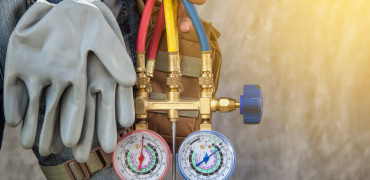According to Alfred Wainwright, famous British fell walker and author of Lakeland guides, “There is no such thing as bad weather, only unsuitable clothing”.
Admittedly, like all good rules, adopting his maxim more widely would mean making allowances for exceptions - no happy couple wants to dress for flash floods on their wedding day, for example.
Generally, though, his logic appears sound: properly prepared, we can cope with the vagaries of our climate, especially in temperate regions such as Northern Europe.
Regardless of whether the forecast is for a Beast from the East, or hosepipe-banning heatwave, the strategy remains the same: it is all a question of adaptability.
To be truly sustainable, we need to build clever, not just think smart
Sustainable comfort
So, when it comes to designing our built environment to be suitably climate-resilient, surely providing sustainable comfort in untypically British weather such as this sweltering summer should be similarly straightforward?
Keeping cool is just about being adequately prepared, right? Is the solution as simple as buildings needing to be appropriately equipped?
Well, not exactly... Global demand for air conditioning is likely to triple by 2050, predicts the International Energy Agency, as stock numbers worldwide surge from 1.6 billion conditioners today to around 5.6 billion by mid-century.
This rocketing rate of uptake would amount to roughly 10 new AC units being sold every second for the next 30 years and require additional electricity generation equivalent to the existing capacity of USA, EU and Japan, combined. When it comes to energy consumption, cooling is the new heating.
Take control
Furthermore, it is not just a matter of the kit installed, but who controls it, when and where. Expectations of personal comfort now run to custom environments at work, home and even in the car, where it is possible for individual passengers and the driver to create their own space settings.
As the world of heating and cooling goes digital, there is a risk that potential gains in energy efficiency will be compromised by ill-managed and ill-informed growth in demand and rampant consumerisation.
The challenge for the built environment, therefore, is to avoid costly over-engineering of buildings that cater extravagantly for an impossibly broad range of climate projections and personal preferences.
Sophisticated climate modelling and predictive analytics can together sustainably scope future building requirements, up to a point, but there is still an element of human interaction and manual control to factor into the equation.
Simultaneous and smart
So, smart buildings, homes and systems need to enable, not inhibit, intelligent decision-making on the part of users.
The good news is that architecture and construction are perfectly capable of delivering smart and sustainable, simultaneously.
Described as the greenest building in the world, Deloitte’s Amsterdam HQ ‘The Edge’, for example, received the highest ever BREEAM rating for an office development anywhere in the world.
A key part of its employee appeal is the sensor-rich intelligent design that, amongst other things, facilitates precision comfort controls for areas such as temperature and light to accommodate individual desires and create multiple microclimates, all accessible via a smartphone app. Its radical personalisation even extends to hot-drinks machines that remember how you take your coffee.
Whilst tech is a vital tool, however, it is not the only answer.
Faced with rising frequency of extreme weather events and impending climate impacts, a more holistic approach to sustainable comfort is called for in design and engineering of the built environment of tomorrow – one which considers traditional attributes and disciplines such as thermal mass and airtightness, as well as innovations like responsive architecture and smart technology.
In short, to be truly sustainable, we need to build clever, not just think smart.




